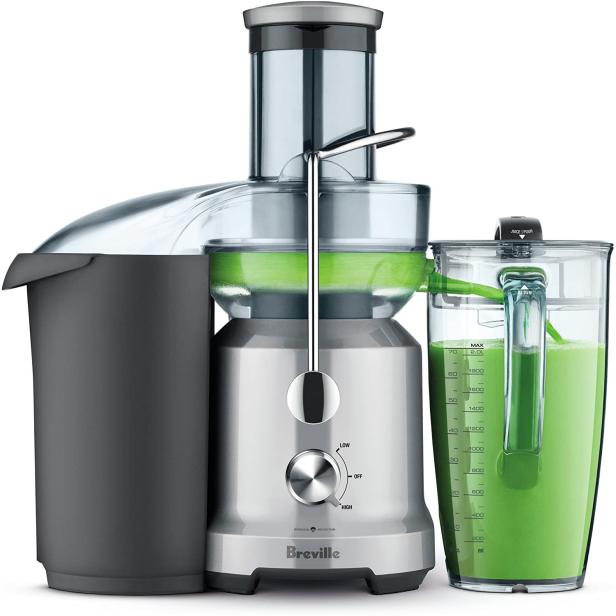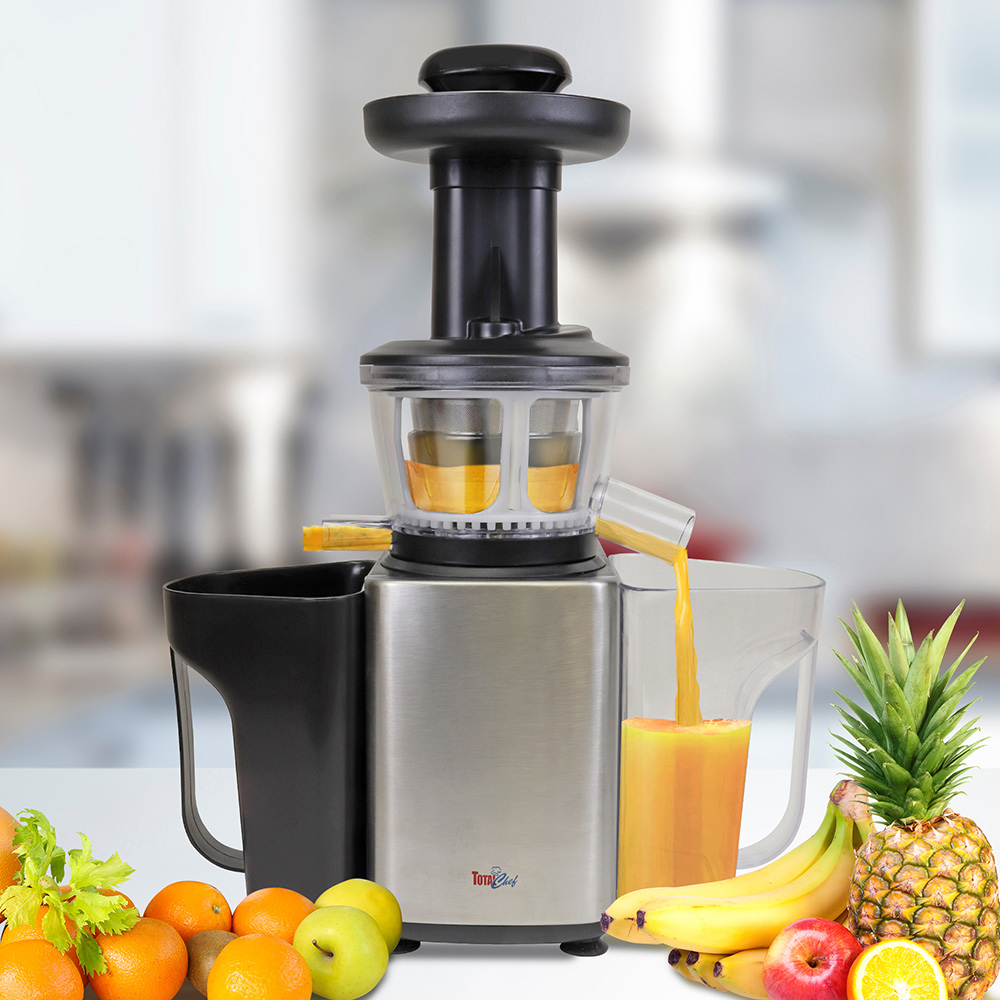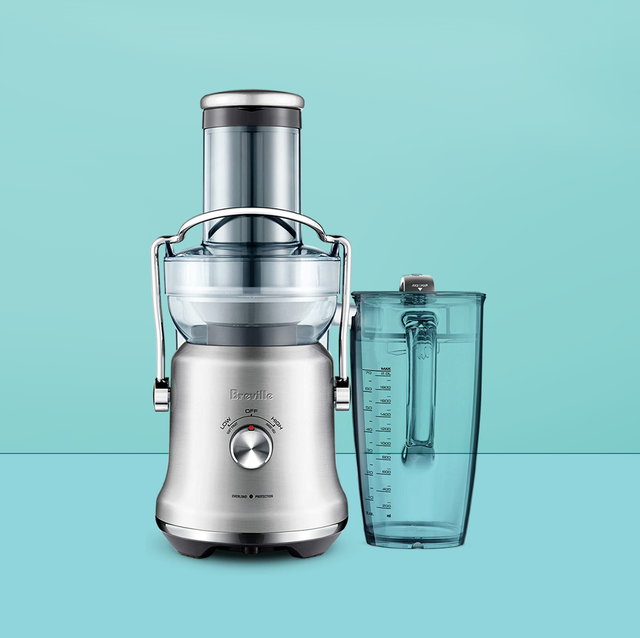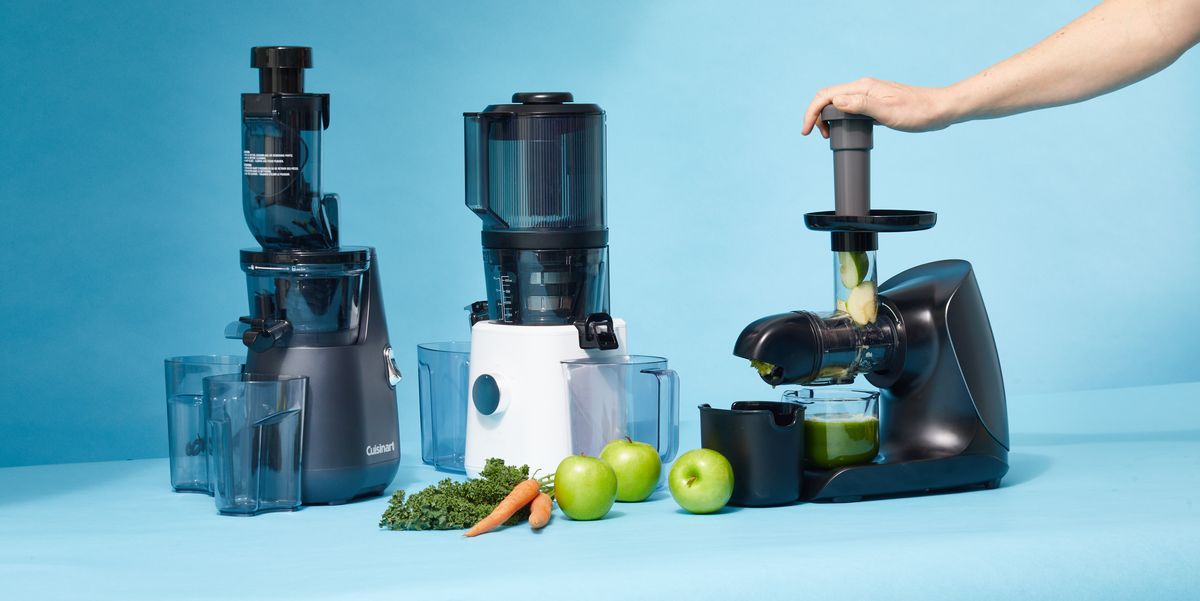I. Introduction to Juicers
A. Definition and Purpose of Juicers
Juicers are kitchen appliances specifically designed to extract juice from fruits and vegetables. Their primary purpose is to provide a convenient and efficient way to obtain fresh, homemade juices, packed with essential vitamins, minerals, and antioxidants. By separating the liquid content from the fibrous pulp, juicers offer a quick and easy method for incorporating natural, nutrient-rich beverages into one’s daily diet.
B. Historical Evolution of Juicing Technology
The concept of extracting juice from fruits can be traced back centuries. Traditional methods involved manual squeezing or pressing of fruits to collect their liquid. Over time, technological advancements led to the development of various juicing mechanisms. In the early 1900s, the first electric juicers were introduced, simplifying the process. Today, juicers have evolved to incorporate different types and techniques to cater to diverse consumer preferences and health requirements.
C. Importance of Juicers in Modern Lifestyles
Juicers have become increasingly popular in recent years due to the growing emphasis on health-conscious lifestyles. With the rise of juicing trends and a greater focus on natural, whole-food diets, juicers offer a convenient way to consume fruits and vegetables in liquid form. They allow individuals to enjoy the benefits of fresh juice, from enhancing hydration and supporting immune health to promoting weight management and boosting energy levels.

II. Types of Juicers
A. Centrifugal Juicers
Centrifugal juicers are among the most commonly used juicers due to their speed and convenience. They operate by utilizing centrifugal force to separate the juice from the pulp. These juicers consist of a high-speed spinning blade that chops up the fruits and vegetables, forcing the juice through a strainer while directing the pulp into a separate container. Centrifugal juicers are known for their quick juicing process and wide feeding tubes, allowing for effortless juicing of whole fruits and large quantities.
B. Masticating Juicers
Masticating juicers, also known as slow juicers or cold-press juicers, operate at lower speeds compared to centrifugal juicers. They use a chewing or grinding mechanism to break down the produce, slowly extracting the juice while preserving the nutrients and enzymes. Masticating juicers are known for their efficiency in extracting juice from leafy greens, wheatgrass, and other fibrous ingredients. They tend to be quieter, produce less heat, and yield a higher juice content compared to centrifugal juicers.
C. Citrus Juicers
Specifically designed for citrus fruits such as oranges, lemons, and grapefruits, citrus juicers cater to individuals who prefer freshly squeezed citrus juices. These juicers typically have a reamer or cone-shaped attachment that is manually or electrically operated to extract juice from the halved fruits. Citrus juicers are appreciated for their simplicity, efficiency, and ability to extract maximum juice from citrus fruits with minimal effort.

III. Operational Mechanism of Centrifugal Juicers
A. Centrifugal Force and High-Speed Blades
Centrifugal juicers rely on the principle of centrifugal force, which is the outward force generated by the rapid rotation of a central axis. These juicers have a cylindrical chamber where fruits or vegetables are inserted through a feeding tube. As the machine is turned on, the high-speed blades spin rapidly, chopping up the produce and flinging the cells against the sides of the chamber. The centrifugal force separates the juice from the pulp, forcing the juice through small holes in the strainer while the pulp collects in a separate container.
B. Pulp Ejection and Juice Extraction
In centrifugal juicers, the pulp is separated from the juice by the spinning motion of the blades. Many centrifugal juicers also have a built-in pulp ejection system that automatically removes the extracted pulp, allowing for continuous juicing without interruptions. The extracted juice is collected in a separate container attached to the machine, ready to be enjoyed.
C. Benefits and Drawbacks
Centrifugal juicers offer several advantages, including their high-speed operation, which allows for quick juicing and minimal preparation time. They are best suited for juicing firm fruits and vegetables, such as apples, carrots, and cucumbers. However, due to the high speed and heat generated during operation, centrifugal juicers may result in some heat and oxidation, which can reduce the nutrient content and shorten the shelf life of the juice. Additionally, the high-speed blades can cause some oxidation, leading to potential foaming and separation in the juice.

IV. Operational Mechanism of Masticating Juicers
A. Slow Crushing and Squeezing Action
Masticating juicers, also known as slow juicers, employ a different approach to juice extraction. They utilize a single or twin auger mechanism that rotates at a slow speed. As the auger turns, it crushes and squeezes the fruits or vegetables, effectively breaking down the cell walls and releasing the juice. The resulting juice is then filtered through a fine mesh, while the pulp is pushed to the end of the auger and expelled into a separate container.
B. Low-Speed Auger and Nutrient Preservation
The slow speed at which masticating juicers operate is one of their key features. By minimizing heat and oxidation during the juicing process, masticating juicers help preserve the natural enzymes, vitamins, and minerals present in the produce. This slower extraction method results in higher nutrient retention and a juice that maintains its vibrant color, natural flavors, and smooth consistency.
C. Juice Yield and Quality Considerations
Masticating juicers excel at extracting juice from a wide range of ingredients, including leafy greens, wheatgrass, and soft fruits. Their efficient crushing and squeezing action extract a greater amount of juice from the produce, leading to higher juice yield compared to centrifugal juicers. Moreover, the slow extraction process ensures minimal foam and separation in the juice, resulting in a visually appealing and well-textured juice.
However, it is essential to note that masticating juicers generally require more time to produce juice due to their slower speed and the need for a more meticulous feeding process. Their compact size and narrow feeding chute might require the produce to be cut into smaller pieces, increasing preparation time. Additionally, masticating juicers are typically pricier than centrifugal juicers due to their more advanced technology and superior juice quality.

V. Operational Mechanism of Citrus Juicers
A. Manual and Electric Citrus Juicers
Citrus juicers come in two main varieties: manual and electric. Manual citrus juicers are usually handheld devices that feature a reaming cone on top and a collection cup or reservoir underneath. By placing a halved citrus fruit onto the cone, pressure is applied and the juice is manually extracted. Electric citrus juicers, on the other hand, operate at the push of a button. They have an automated reaming mechanism that spins the cone, extracting juice from the fruit without requiring manual effort.
B. Reaming or Pressing Citrus Halves
Regardless of the type, citrus juicers rely on the reaming or pressing action to extract juice from citrus fruits. The reaming cone, often ridged or patterned, effectively applies pressure to the citrus halves, ensuring maximum juice extraction. For manual citrus juicers, steady hand pressure is applied to rotate the fruit along the reamer. Electric citrus juicers automate this process by spinning the reamer automatically, requiring even less effort from the user.
C. Efficiency and Limitations
Citrus juicers are exceptionally efficient at extracting juice from citrus fruits, providing a high yield with minimal waste. They are specifically designed to capture the tangy, refreshing flavors of oranges, lemons, grapefruits, and other citrus varieties. However, it is important to note that citrus juicers are not suited for juicing other types of produce, such as leafy greens or hard fruits. Their functionality is specialized to deliver optimal results when juicing citrus fruits exclusively.
VI. Comparing the Performance and Output of Different Juicer Types
A. Juice Content and Nutrient Retention
Centrifugal juicers are known for their ability to quickly extract generous amounts of juice, making them ideal for those who prioritize speed and convenience. However, due to the high-speed operation, some heat and oxidation may occur, leading to potentially lower nutrient retention. On the other hand, masticating juicers offer slower extraction speeds, resulting in higher nutrient preservation and juice quality. They are particularly suited for those seeking the maximum nutritional benefits from their juices.
B. Processing Speed and Ease of Use
Centrifugal juicers excel in terms of processing speed, allowing users to juice large quantities of produce in a short amount of time. Their wider feeding tubes also minimize the need for extensive or time-consuming cutting and preparation. Masticating juicers require a more patient approach, as their slower operation may require smaller produce pieces and a bit more time for juice extraction. However, their user-friendly controls and intuitive design make them easy to operate and navigate.
C. Cleaning and Maintenance Requirements
Cleaning and maintenance are important factors to consider when choosing a juicer. Centrifugal juicers are generally easier to clean due to their simpler design and the presence of pulp ejection systems. Many parts of centrifugal juicers are also dishwasher-safe, further enhancing their ease of cleaning. Masticating juicers, while requiring a bit more effort to clean, often come with specialized cleaning brushes and disassembly features to facilitate thorough cleaning. Both types of juicers require regular maintenance, such as the removal of pulp or residue, to ensure optimal performance and longevity.
